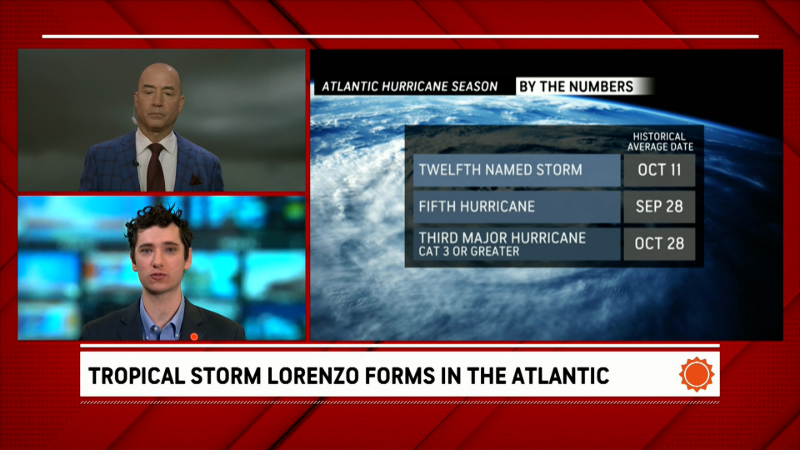Biggest Pacific storm in months to soak California, bring mountain snow
The first snow since spring is forecast for some across the western U.S., while others can expect a dose of heavy rain and flooding.
One of the most popular features of the free AccuWeather app is MinuteCast®, which provides hyper-localized forecasts that track rain minute-by-minute so you can plan your day more precisely.
A storm will barrel across the West Coast this week, bringing much-needed rain and some mountain snow for the first time since early spring.
Showers began breaking out across Oregon and Northern California on Monday morning. Rain and high-elevation snow are forecast to expand as the storm dives southward along the Pacific coast.

“The rain will come fast and furious Monday afternoon in the Bay area and by Monday evening in the Central Valley of California," said AccuWeather Meteorologist Chad Merrill.
Widespread rainfall amounts of 1-2 inches are expected from Redding, California, to Los Angeles.
"The heaviest rain will reach the LA Basin Monday night and continue through Tuesday evening," said AccuWeather Meteorologist Brandon Buckingham. This could contribute to travel delays on the roads and at airports across the region.

The foothills and mountains of Southern California could have as much as 2-4 inches of rain by Tuesday evening, which will bring the risks of flash flooding and debris flows, especially near burn scar areas, Buckingham warned.
The storm will be potent enough that even thunderstorms will be of concern in Southern California Monday night and Tuesday.

"Flash flooding problems will mount quickly after the rain starts. There will even be a few thunderstorms that not only drop briefly heavy rain but also produce some wind and even hail," Merrill said.
At the height of the storm, as winds blow in from the Pacific Ocean, temperatures will trend downward from the 70s to the 60s Fahrenheit in many low elevations in Northern California and the immediate Southern California coast early this week.

The incoming cold will allow for snow levels to drop to around 5,000 feet through Tuesday. Travelers planning to drive on Interstate 80 through Donner Pass, California, can expect a couple of inches of slushy snow and delays. Above the passes in the mountains, a foot or more of snow could accumulate, including in some of the resorts near Lake Tahoe.
As the storm moves east into the middle of the week, so too will the cold air, allowing for some precipitation to fall as snow across the highest elevations of Nevada, northern Utah, Idaho and Wyoming.
Much of the areas forecast to have rain on Wednesday are currently in a deep drought. According to the most recent update from the U.S. Drought Monitor, 83% of Idaho and 100% of Utah is in a moderate, severe or extreme drought.

The storm will also strengthen enough to increase the risk for severe thunderstorms as it shifts toward the central U.S. The cool air brought into the West by the storm, clashing with a strong southerly wind transporting warm air from Mexico, will create conditions prime for thunderstorm development.

Drenching downpours and lightning could be widespread with these thunderstorms. However, AccuWeather meteorologists warn thunderstorms may also produce hail and damaging wind gusts during the afternoon and evening hours.
Additional rounds of strong to severe thunderstorms may persist across the Plains as the week progresses.
Want next-level safety, ad-free? Unlock advanced, hyperlocal severe weather alerts when you subscribe to Premium+ on the AccuWeather app. AccuWeather Alerts™ are prompted by our expert meteorologists who monitor and analyze dangerous weather risks 24/7 to keep you and your family safer.
Report a Typo














